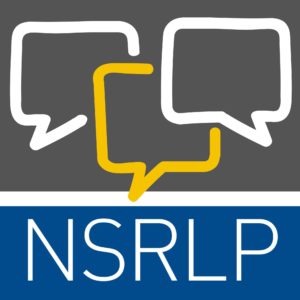Last week’s announcement by Legal Aid Ontario of new funding of $154 million over four years (http://www.legalaid.on.ca/en/news/newsarchive/1506-08_eligibilityexpansion.asp) was the biggest cause for celebration among A2J advocates in a long time.
At a time of unprecedented numbers of self-represented litigants in family and civil court, every effort to widen the number of individuals who can be assisted with legal information, summary legal advice, and legal representation (via the certificate program) is welcome. Last week’s announcements also introduced important targeting of service to specific case clusters, including third-party applications in Children’s Aid cases, and parents negotiating with Children’s Aid outside court.
All this is good news, and I worry that throwing any cold water on this announcement will make me seem like a spoiler.
But I have three concerns that I think are important, and I want to share in this week’s blog. My hope is that this can contribute to the ultimate success of this effort to use expanded public funding in the best possible way.
- Legal Aid Ontario has not yet talked to the public
Critical stakeholder consultation (50 meetings) appears to have taken place prior to the announcement, including with some social service agencies and community groups. I shall return to the question of consultation with the legal profession in a moment.
However LAO has not yet conducted any direct public consultation with Legal Aid clients or with other members of the public about their experiences in the justice system, and what type of assistance they would find most useful. Of course there is some research and evaluation material is available, and consultations with social agencies serving vulnerable communities are especially important.
However public consultation – which can provide vital information about service access, implementation and impact that is not currently available from any other source – has yet to occur.
I am not sure why not. Do we still believe that we don’t really need to ask the public? That we already know what they want/ what would be good for them and therefore that talking with clients wouldn’t add anything important? Or, that there isn’t enough time to talk to everybody and it is more important to talk exclusively to experts than stakeholders? (LAO calls the groups it has consulted “stakeholders”, but they are really partners in delivery – to me the real stakeholders are the public). Or, is LAO perhaps unsure how to go about consulting the public?
It seems important for both substantive reasons and as a matter of democratic process that a statutory agency that is charged with spending $154 million of public money engage in meaningful public consultation. Hopefully, that is coming soon.
- Getting legal aid to those who qualify
Last November’s announcement of expanded eligibility focused on raising the financial threshold for qualification for legal aid in Ontario. As legal economist Gillian Hadfield pointed out to the New York Task Force on Access to Civil Justice in 2012, there is no math that works to provide public assistance for everyone who can no longer afford a lawyer, the numbers are just too huge. And LAO cannot be blamed for the math. Any raising of the financial threshold, however small, is welcome.
Perhaps one reason for scant media attention to LAO’s new (June 8) announcement was that it was not immediately clear what difference it would make to those Ontarians unable to afford a lawyer yet financially ineligible for assistance. The simple answer is that unless you live below the poverty level (still the marker), June’s new programs will not affect you.
However if you already qualify financially, your chances of obtaining a certificate for full representation are now somewhat better. Because meeting the financial qualification – before or after the new announcement – does not mean that you automatically get legal representation for family or civil matters. The next step is a decision by a legal aid officer based on the “serious” nature of your case (although presumably every SRL considers their matter to be serious or they would not be punishing themselves by self-representation). We also know from our own research that some of those awarded a certificate do not find a lawyer who will take their case (although this information does not appear to be systematically collected by legal aid providers).
Legal Aid Ontario will use some of its new funds to add assistance in specific case-clusters (for example, domestic violence cases, third party caregiver cases involving Children’s Aid). A decision over awarding a certificate is now supplemented by some additional factors including (for example) whether the dispute is “multi-issue”, or whether the client has literacy challenges, or mental health issues.
As well, some of the new initiatives reflect the sensible goal of offering assistance sooner rather than later to avoid escalation (also reflected in previous announcements about funding independent legal advice (ILA) for mediation clients, legal representation for parents negotiating with Children’s Aid, and legal assistance for drafting separation agreements outside court).
I have no argument with these ideas – the new “legal eligibility” factors and case clusters seem sensible. My concern is how this is actually going to work in practice.
Hopefully much of this will be made clear in the months to come, but there are many outstanding practical questions. How will information about these new services be communicated to the potential client groups? How will clients access these services?
For example, how will family litigants be informed about the opportunity to access independent legal advice (ILA) before signing a mediation agreement? (bearing in mind that most family SRLs cannot even recall being offered mediation in the blur of their experience: see The SRL National Study at https://representingyourselfcanada.com/wp-content/uploads/2014/02/reportm15-2.pdf at section 9(e)). And what will litigants be told to enable them to weigh the value of ILA to them? (given that some research – e.g. Nolan-Haley, 1996 – suggests that ILA may be unhelpful to resolution where it is provided by a lawyer unfamiliar with the dynamics of mediation).
How are parents wishing to negotiate with Children’s Aid before legal action going to be informed about the possibility of legal representation – by their social worker? How is a couple who wants a non-adversarial divorce going to find out that they can get legal help to draft a separation agreement outside the courts??
Perhaps there are answers to all these questions. I just worry that in two years time we shall be told that there was no take-up for these programs and therefore they have been cancelled.
- Confronting the default full representation model
After the “who” and the “what” of legal aid delivery, the third component must be the “how”.
Using limited public resources for a major A2J problem requires radical rethinking that must include how legal services are delivered.
LAO has done a good job of developing more legal information services, especially for family litigants. Family Law Information Centres and similar services now available in Ontario courthouses are making a difference to many people.
But as many people recognize, allowing paralegals to handle family matters in Ontario courts would make a far larger difference. Was there any discussion of this in the LAO’s consultations with the Bar? Can LAO be part of a reasonable, informed and responsible effort to encourage the Law Society of Upper Canada to reconsider this?
I also wonder whether in its consultations with the Bar, and outside the specific initiatives described above, there was any discussion about certificates offering anything other than full representation. This is despite the fact that we know that many litigants are willing and indeed able to undertake some of the tasks associated with their legal action themselves, and many described being discomforted by a “lawyer-in-charge” model when they did retain private counsel.
Offering full representation to some legal aid clients is essential. But does everyone need this, or could some use an unbundled approach in which they at least began with a certificate for a limited number of hours which they expend, using their own judgment, on a lawyer who can support and coach them through the process?
Surely a less-expensive (also less paternalistic, less traditional) client service model that includes the options of legal coaching and unbundling – along with the provision of some legal services by less-costly professionals, would enable more people to enjoy a slice of the (limited) pie?
Finding creativity and courage
These three sets of questions are intended to push us to do even better with the new resources that LAO receives over the next 4 years. I know that LAO is committed to providing more services to more Ontarians – and meeting the incredibly diverse needs of the growing numbers of people going to court alone is extraordinarily complex. The old remedies – summary legal advice, all-or-nothing representation certificates – will not get us there.
As I have argued before in this blog, it is a mistake to see public legal services (or pro bono services) as “the complete solution” to the A2J crisis – many of the solutions lie with the private Bar which must resolve just whom they wish to serve, and how.
The immense coverage challenges faced by public legal services require us all to be both creative and courageous. Our creativity will be enhanced by incorporating the actual experiences of consumers and would-be consumers of public legal services into planning and spending decisions. Our courage needs to be manifest in engaging the private Bar in a serious discussion about what services they will provide – including legal coaching and unbundling – and who else may provide legal services.











